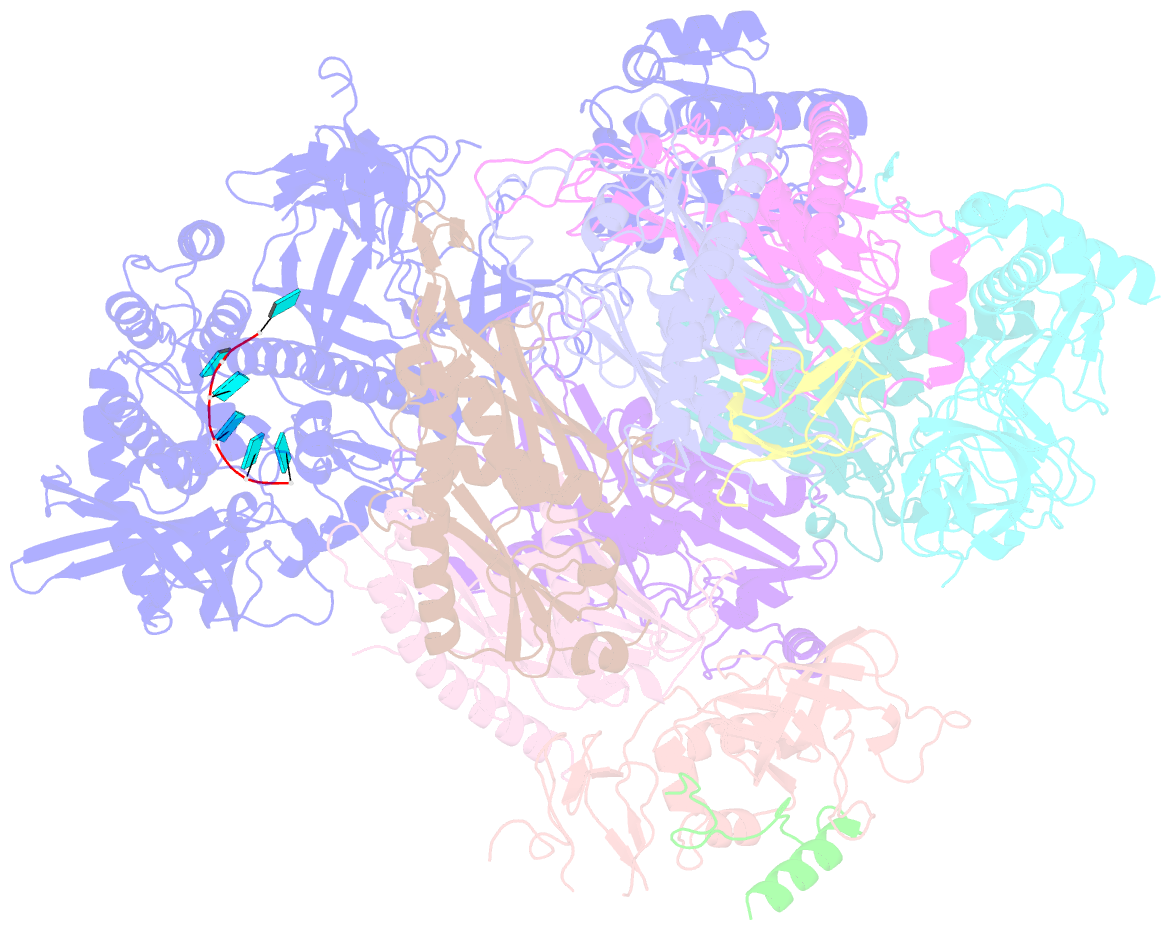Summary information and primary citation
- PDB-id
- 6h25; SNAP-derived features in text and JSON formats;
DNAproDB
- Class
- RNA binding protein
- Method
- cryo-EM (3.8 Å)
- Summary
- Human nuclear RNA exosome exo-10-mpp6 complex
- Reference
- Gerlach P, Schuller JM, Bonneau F, Basquin J, Reichelt P, Falk S, Conti E (2018): "Distinct and evolutionary conserved structural features of the human nuclear exosome complex." Elife, 7. doi: 10.7554/eLife.38686.
- Abstract
- The nuclear RNA exosome complex mediates the processing of structured RNAs and the decay of aberrant non-coding RNAs, an important function particularly in human cells. Most mechanistic studies to date have focused on the yeast system. Here, we reconstituted and studied the properties of a recombinant 14-subunit human nuclear exosome complex. In biochemical assays, the human exosome embeds a longer RNA channel than its yeast counterpart. The 3.8 Å resolution cryo-EM structure of the core complex bound to a single-stranded RNA reveals that the RNA channel path is formed by two distinct features of the hDIS3 exoribonuclease: an open conformation and a domain organization more similar to bacterial RNase II than to yeast Rrp44. The cryo-EM structure of the holo-complex shows how obligate nuclear cofactors position the hMTR4 helicase at the entrance of the core complex, suggesting a striking structural conservation from lower to higher eukaryotes.





